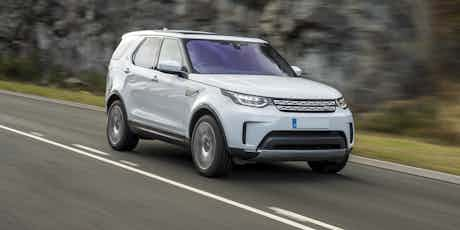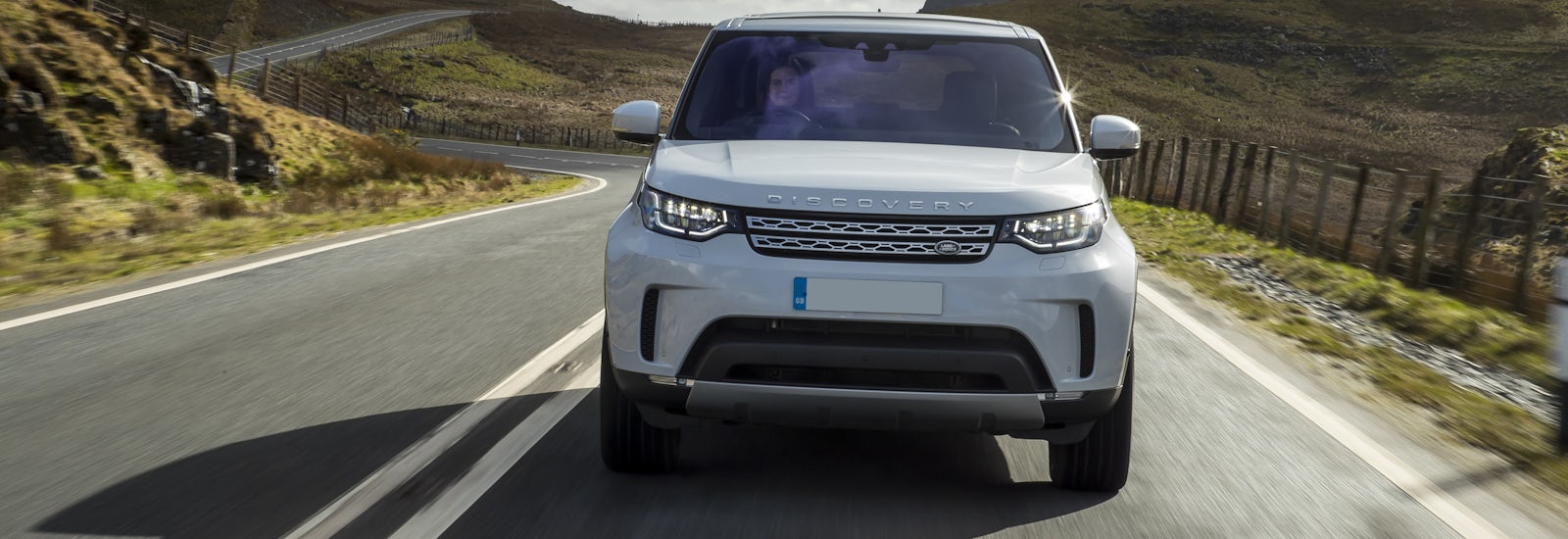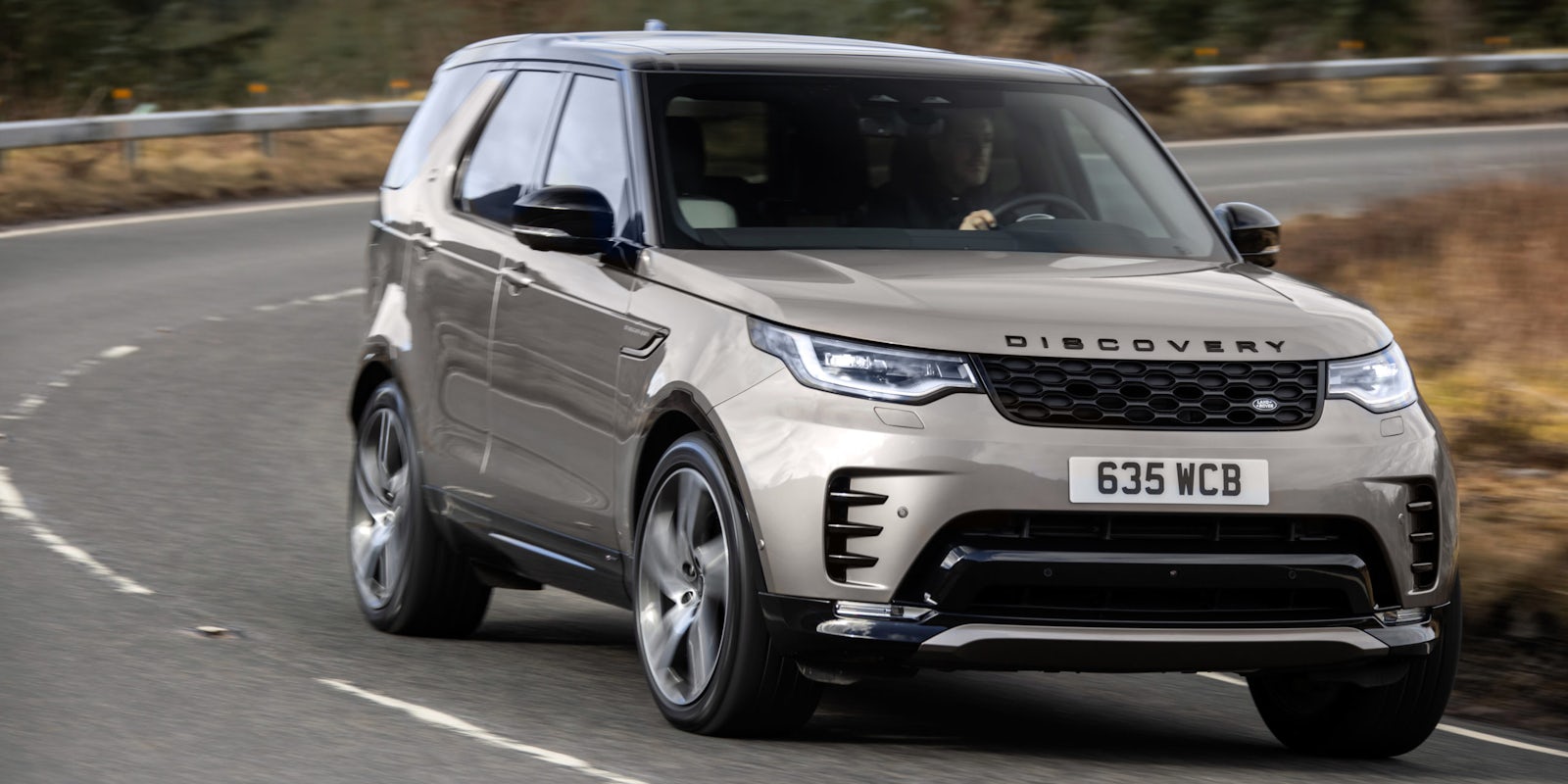Land Rover Discovery sizes and dimensions guide
December 07, 2017 by carwow staff

The Land Rover Discovery is a big seven-seater SUV that’s comfortable, spacious and perfect for carrying your family and friends on long trips on or off road. It isn’t the only car like this though – the Volvo XC90 and Audi Q7 do a similar job – but is the Discovery the best fit for your life?

Exterior dimensions
The Discovery is 4,970mm long – that’s 20mm longer than an XC90 and 82mm shorter than a Q7. It’s still pretty massive but you’d be able to parallel park it in more spaces than you could a Q7.
In terms of width, the 2,220mm Discovery is chubbier than the 2,008mm XC90 and 2,212mm Q7 – on width-restricted roads it feels a bit like piloting a container ship through the Panama Canal. At 1,888mm, the Land Rover is also taller than the 1,740mm Audi and 1,776mm Volvo which makes it look the bulkiest of the three.
| Length | 4,970mm |
| Width | 2,220mm |
| Height | 1,888mm |
| Wheelbase | 2,923mm |

Interior dimensions
Thankfully the Discovery’s enormous exterior translates to a spacious interior. There’s loads of room up front, and you get 1,016mm of headroom. That’s 55mm less than in the Audi Q7, but 18mm more than in the Volvo XC90. Headroom in the back follows a similar theme – at 991mm, the Discovery sits between the Q7 and XC90 that have 1,016mm and 923mm respectively. Legroom, however, isn’t quite as good as in the Audi or Volvo but it’s still plenty roomy.
In terms of the space between the front and rear wheels, called wheelbase, the Land Rover is again a happy midpoint, at 2,923mm, between the 2,984mm Volvo and 2,794mm Audi. Wheelbase is a loose indicator of how much space there is for passengers, so rest assured that your third-row passengers will feel much more comfortable in a Discovery than in a Q7.
| Headroom (front/rear) | 1,016mm/991mm |

Boot space
Boot space with all seven seats up is an okay 258 litres – that’s seven litres more than the boot in a VW Up city car. However, the Land Rover has a bit less capacity than the 314-litre Volvo and the 295-litre Audi with seven seats up.
Flip the Discovery’s rearmost pair of seats down and you’re left with 1,137 litres of space – more than enough for a family car. For comparison, the XC90 has 1,102 litres and the Q7 – 770 litres. Flip all the rear seats down in the Discovery and you have 2,406 litres of space at your disposal which is about 400 litres more than the other two at maximum capacity, but Land Rover does measure boot capacity to the roof rather than the bottom of the windows, like Audi and Volvo do.
| Seven seats up | 258 litres |
| Five seats up | 1,137 litres |
| Seats down | 2,406 litres |

Fuel tank and turning circle
The Discovery is well prepared for long treks in the countryside thanks to a fairly large fuel tank. Actual fuel-tank size varies depending on the engine you pick, but the smallest is a substantial 77 litres and the largest is a whopping 90 litres. That’s roughly similar to what the Q7 and XC90 have. Theoretically, you can go around 730 miles between fill-ups if you go for a 2.0-litre diesel Discovery.
When it comes to U-turns and tight manoeuvring the Land Rover is pretty nimble for its size. It has a 12.3-meter turning circle which is nearly the same as the 12.4-meter Q7 and a bit worse than the 11.9-meter XC90.
| Fuel tank | 77-90 litres |
| Turning circle | 12.3m |

Weight and towing capacity
At around 2,200kgs, the Discovery is quite heavy, but it weighs roughly the same as a XC90. The Q7 is a bit lighter at around 2,000kgs, which means it feels a bit sharper in the corners.
There is a flipside to the Discovery’s weight – it means it’s good for towing. Pick a model with a powerful six-cylinder diesel engine for the most pulling power. The Discovery can pull a 3,500kg braked trailer and although the Q7 can match it, you need to get the optional air suspension in the Audi – without air-ride, the Q7 can only tow 2,800kg. The XC90 can tow 2,700kg.
| Weight | 2,184kg-2,298kg |
| Max towing capacity (braked/unbraked) | 3,5000kg/750kg |
| Towball weight | 150kg |
| Payload | 940kg-1015kg |

Find out more about the Land Rover Discovery
Remember to read our in-depth Land Rover Discovery review.
Cars Change? Carwow!
Looking for a new set of wheels? With Carwow you can sell your car quickly and for a fair price – as well as find great offers on your next one. Whether you’re looking to buy a car brand new, are after something used or you want to explore car leasing options, Carwow is your one stop shop for new car deals.
















